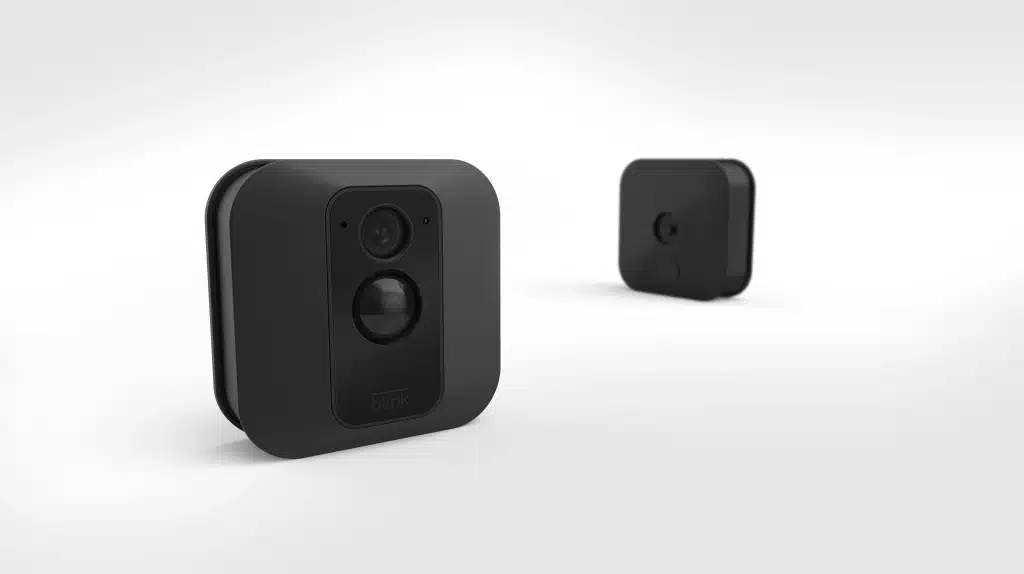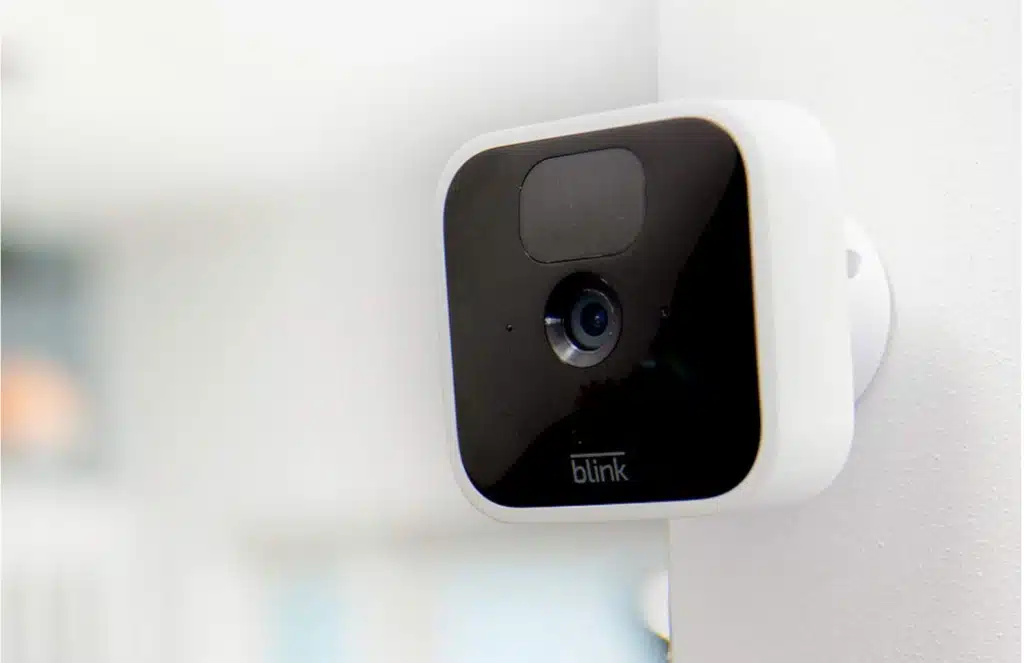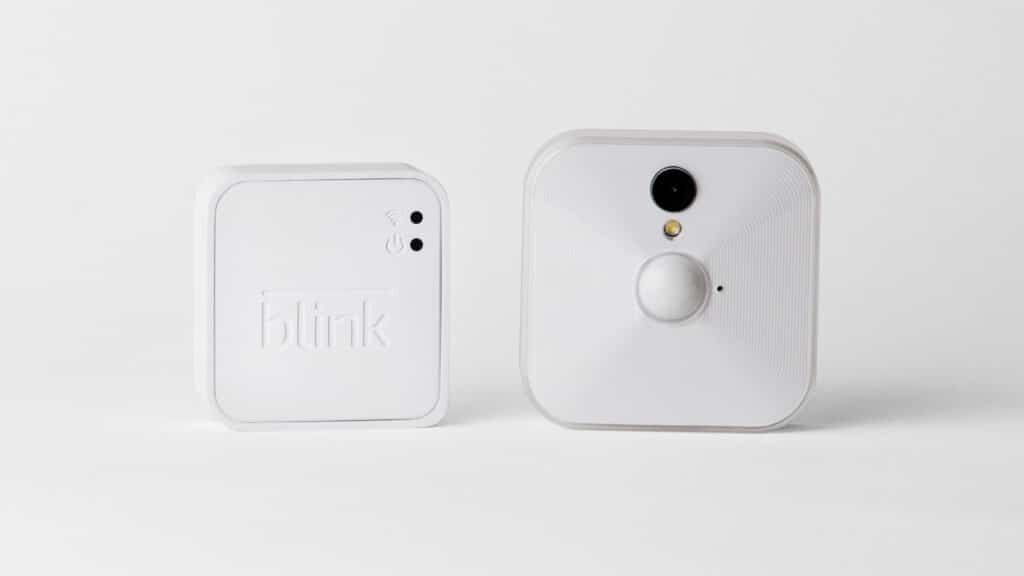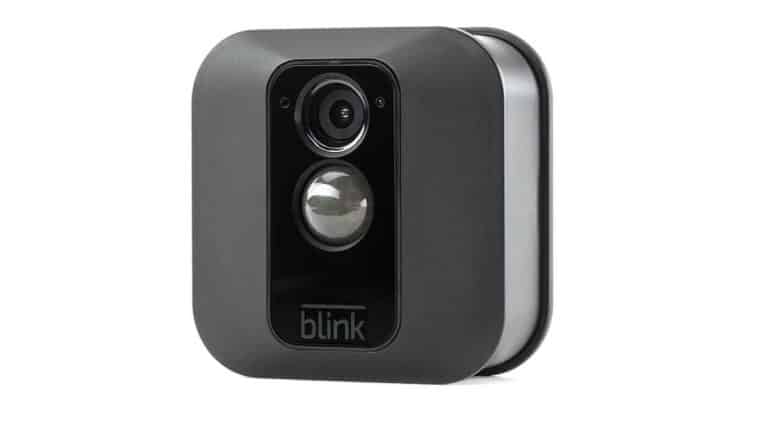Introduction
Why Is My Blink Camera Not Picking Up Motion: In an age where home security systems are becoming an integral part of safeguarding our homes and loved ones, smart cameras have gained immense popularity for their ease of use and remote monitoring capabilities. Among these, Blink cameras have emerged as a popular choice due to their wireless nature, user-friendly setup, and reliable motion detection features. However, in certain instances, users may experience an unsettling situation where their Blink camera fails to capture motion as expected, potentially jeopardizing the camera’s effectiveness as a security device.
It’s important to figure out why this is happening so that these monitoring tools work as well as possible. In this study, the researchers want to find out what might be causing Blink cameras to not pick up movements. Despite Extreme weather or physical obstacles that block the camera’s line of sight are two examples of things that could be accountable.
When you have technical issues or bugs in the software, motion detection might not work right either. A lot of the time, users have trouble connecting to Wi-Fi, placing the camera, or setting the sensitivity. It may be harder for the sensor of the camera to correctly identify and record motion if any of these things are wrong. Besides that, we will talk about ways to fix Blink cameras so that users can get the most out of them and feel more protected and at ease.

How do I get my blink camera to detect motion?
From the main screen of the Blink app, set your system to Armed to enable Motion Detection. Test the camera sensitivity by introducing movement. People, packages, and pets are what home cameras are for.
To get your Blink camera to detect motion effectively, follow these essential steps and tips to optimize its motion detection capabilities:
Camera Placement
Position your Blink camera strategically to cover the areas you want to monitor.
Clear Line of Sight
Ensure there are no obstacles, objects, or vegetation obstructing the camera’s view, as they may interfere with motion detection.
Motion Zones
Utilize the motion zone feature if available on your camera model. Define specific areas where you want the camera to detect motion, reducing false alerts from irrelevant movements.
Sensitivity Settings
Adjust the motion sensitivity settings through the Blink app or dashboard. Experiment with different levels to find the right balance between capturing relevant motion events and minimizing false alarms.
Firmware Updates
Regularly check for firmware updates for your Blink camera and ensure it is running the latest version to improve its overall performance, including motion detection.
Motion Frequency
Set the motion frequency to the appropriate interval in the app. This determines how often the camera checks for motion, balancing battery life and detection responsiveness.
Proper Lighting
Adequate lighting conditions can enhance motion detection. Consider installing outdoor lighting or using indoor lights if your camera is in a low-light area.
Wi-Fi Signal
Ensure a stable Wi-Fi connection for your camera. A weak signal may result in delayed or missed motion alerts.
How far will Blink detect motion?
Approximately 20 feet
How far can Blink cameras identify motion before they stop? For all blink cameras, the farthest motion sensing range is about 20 feet. The app’s sensitivity setting, where the camera is placed, the size of the item, its infrared lighting, and its temperature are all things that can change motion detection.
The distance where the Blink cameras can sense motion is different for each model and depends on the surroundings. Most of the time, Blink cameras can identify movement within a certain distance, usually between 20 and 30 feet (6 to 9 meters).
But this range can be changed by a number of things, including:
Sensitivity Settings
In the Blink app or dashboard, you can change the sensitivity settings to change the range of motion that the camera can sense. Higher sensitivity levels can make the range longer, but they may also cause more false alarms from small moves. Lower sensitivity levels can make the range shorter, but they may also reduce the number of false alarms.
Camera Model
Different Blink camera models may have varying motion detection capabilities. Higher-end models may offer more advanced motion sensors with a longer detection range compared to basic models.
Environmental Conditions
The environment in which the camera is placed can affect motion detection. Factors such as lighting conditions, weather, and physical obstructions can impact the camera’s ability to detect motion accurately.
Camera Placement
For Putting the camera at the right height and angle can help it see more and give you a better chance of seeing movements within the range you want.
Motion Frequency
The motion frequency setting in the Blink app determines how often the camera checks for motion. Adjusting this setting can affect the camera’s responsiveness to motion events.
Does Blink record all motion?
Unfortunately, Blink cameras do not record 24/7, they are purely motion-based clips. With a subscription plan, you’ll only be able to look at Live View continuously, but even that has a time limit.
Blink cameras don’t record everything that moves all the time. Blink cameras are different from regular security cameras because they only record when they sense motion. This saves battery life and storage space. This way of doing things helps Blink cameras work better and cost less for users.
When a Blink camera is armed and detects motion within its field of view, it will start recording a short clip of the detected motion. The length of the recording is typically set by the user and can range from a few seconds up to a minute, depending on the camera’s settings. Once the motion event triggers a recording, the Blink camera will send an alert to the user’s mobile device, notifying them of the motion event. Users can then view the recorded clip through the Blink app or the online dashboard.
After the recorded clip is sent to the Blink servers for storage, the camera goes back into its low-power standby mode until the next motion event occurs. This approach not only saves battery power but also reduces the amount of data that needs to be stored, making it more manageable and cost-effective for users who may have limited cloud storage plans.
Does Blink Outdoor have motion detection?
Blink Outdoor (3rd Gen) – wireless, weather-resistant HD security camera with two-year battery life and motion detection, set up in minutes – Add-on camera (Sync Module required)
Yes, Blink Outdoor cameras are equipped with motion detection capabilities. The Blink Outdoor camera is designed to detect motion within its field of view and automatically start recording a short clip when motion is detected. This feature enables the camera to capture and save relevant events, such as movement near your home or property, helping to enhance security and surveillance.
The motion detection system in Blink Outdoor cameras is based on a passive infrared (PIR) sensor, which can detect changes in infrared radiation caused by moving objects or changes in temperature. When the PIR sensor identifies motion, it triggers the camera to begin recording a video clip of the detected activity.
Blink gives people the chance to change how motion detection works. Users can change the level of sensitivity of the motion recognition in the Blink app or online dashboard to get fewer false alerts or make the camera more responsive to motion. Additionally, the motion zone tool lets users choose specific areas of the camera’s view where they want motion to be picked up. This helps the camera focus even better and cuts down on alerts that aren’t needed.

Why is my Blink floodlight not detecting motion?
Check the sensitivity
The fact that your floodlights won’t turn on could also be due to motion detection. The lights might not work because it is set too low. Small changes to the options for sensitivity can have a big effect. Small amounts at a time, raise the sharpness, and see if that changes anything.
If your Blink floodlight is not detecting motion, there could be several reasons for this issue. Here are some common factors to consider and potential solutions to troubleshoot the problem:
Motion Zone Settings
Check the Blink app or panel to see how the motion zone is set up. Make sure that the motion zones are set up properly to cover the areas where you want the lights to detect movement. If you need to, change the zone settings.
Motion Sensitivity
Check to see what amount of motion sensitivity your Blink floodlight has. If you set it incorrectly, the device might not pick up on smaller moves. To get more motion events, try making the sensitivity higher.
Camera Placement
Ensure that the floodlight camera is mounted at an appropriate height and angle for optimal motion detection. Avoid placing it too high or too low, as this may affect its ability to sense motion accurately.
Obstructions and Interference
Make sure that nothing is in the way of the floodlight’s view, as this could make it less sensitive to motion. Also, think about any possible interference sources, like shiny surfaces or bright lights, that could make it harder for the camera to identify motion.
Camera Lens Cleaning
Check the camera lens for any dust, dirt, or smudges that might obstruct its view. Clean the lens carefully with a soft, lint-free cloth if needed.
Firmware Updates
Make sure that the software on your Flash floodlight is up to date. Upgrading the device’s firmware on a regular basis can fix bugs or make it work better generally, including at detecting motion.
Wi-Fi Connectivity
A stable Wi-Fi connection is crucial for reliable motion detection. Check your Wi-Fi signal strength and consider moving the router or using Wi-Fi extenders to improve connectivity if necessary.
Why is my Blink not recording motion at night?
If your Blink Camera is not recording at night, check and enable the Night Vision feature. If the camera has trouble detecting motion at night, increase the motion sensitivity. Network issues can also render Blink Cameras unusable.
If your Blink camera is not recording motion at night, several factors could be contributing to this issue. Here are some common reasons and potential solutions to address the problem:
Insufficient Lighting
Like most security cameras, blink cameras need enough light to effectively detect motion. The camera’s motion sensor might not be able to pick up on moves if the area being watched is too dark. To improve vision at night, you might want to add more lighting, like outdoor illumination or infrared illuminators.
Motion Sensitivity Settings
Check the settings in the Burst app or dashboard for how sensitive they are to movements. Setting the camera’s sensitivity too low risks missing little motions that occur in the dark. If you want to get more motion pictures in low light, try making the camera more sensitive.
Motion Frequency Setting
The motion frequency setting determines how often the camera checks for motion. If the degree of sensitivity is set too low, the camera’s sensor could fail to be sensitive enough to pick up motion at night. Adjust the frequency to a suitable level to improve detection.
Infrared Interference
The camera’s night vision may be compromised if there are other nearby sources of thermal light.Make sure to ensure that the camera can only see one infrared light source at a time.
Camera Placement and Angle
Make sure the camera is pointed in the right direction to capture the region you need to watch at night. Adjust the angle and height if necessary to optimize its night vision capabilities.
Firmware Updates
Ensure your Blink camera is running the latest firmware version. Regularly updating the camera’s firmware can address potential bugs and improve overall performance, including night vision and motion detection.
How can I troubleshoot the motion detection issue with my Blink camera?
If you are experiencing motion detection issues with your Blink camera, there are several troubleshooting steps you can take to address the problem. Follow these guidelines to enhance the camera’s motion detection capabilities:
Check Camera Positioning
Ensure that your Blink camera is properly positioned to cover the area you want to monitor. Adjust the camera’s angle and height to optimize its field of view for motion detection.
Motion Sensitivity Settings
Check the options for how sensitive the Blink app as well dashboard is to motion. The camera might not notice some movements if the sensitivity setting is too low. If you want to catch more events, raise the intensity. If you’re getting too many false alerts, lower it.
Motion Zone Settings
If available, utilize the motion zone feature to define specific areas where you want the camera to detect motion. Adjust the zones to focus on high-traffic areas and minimize irrelevant alerts.
Clear Line of Sight
Ensure there are no physical obstructions, such as plants or objects, obstructing the camera’s view. Clearing the line of sight can improve the camera’s ability to detect motion.
Firmware Updates
Verify that your Blink camera has the latest firmware version. Regularly updating the camera’s firmware can fix bugs and improve overall performance, including motion detection.
Wi-Fi Connectivity
A stable Wi-Fi connection is crucial for reliable motion detection. Check your Wi-Fi signal strength and consider moving the router or using Wi-Fi extenders if needed.
Camera Lens Cleaning
Check the camera lens for any dust, dirt, or smudges that might affect its performance. Clean the lens gently with a soft, lint-free cloth.
Battery or Power Issues
If your Blink camera requires batteries, ensure sure they are fresh. Low battery levels can make it harder for the camera to identify motion. Check to see if there are any problems with the power source and connections for hardwired cameras.
What is the ideal motion sensitivity setting for my Blink camera?
The best motion sensitivity level for the Blink device will change based on the conditions in which you plan to use the camera for surveillance. Finding the right balance between capturing relevant motion events and minimizing false alerts is crucial. Here are some guidelines to help you determine the ideal motion sensitivity setting for your Blink camera:
Assess Your Surveillance Area
Evaluate the area you want the camera to monitor. Consider the typical movement patterns and the level of activity in that area. Higher sensitivity settings are suitable for high-traffic areas, while lower settings may be more appropriate for quieter spaces.
Minimize False Alerts
If you are getting too many false alarms, like those caused by trees moving or cars going by, you might want to lower the sensitivity. Lowering the sharpness can help get rid of events that aren’t important.
Optimize Detection Range
Adjust the sensitivity to achieve the desired detection range. Ensure the camera can detect motion within the distance you want to monitor effectively.
Utilize Motion Zones
Define zones where you want your Blink camera to look for motion if it has the capability. This feature can help refine the camera’s focus and reduce false alerts.
Test and Fine-Tune
After adjusting the sensitivity, test the motion detection by walking through the camera’s view to see if it captures motion accurately. Repeat the process as needed to find the optimal setting.
Consider Day and Night Settings
Remember that the best setting for sensitivity may change from day to night. Because lights can change, you may want to change the sensitivity for each situation separately.
Regular Monitoring
Keep an eye on the camera’s motion detection performance over time. Depending on environmental factors, you may need to periodically adjust the sensitivity setting to maintain optimal performance.

Conclusion
The most important thing about home security is that monitors like Blink cameras work only if they can correctly detect and record motion. Motion recognition users need to know about the problems that can happen and how to fix them in order to get the most out of their devices and keep their space safe. Environment factors, such as inclement weather or actual impediments, can obscure the camera’s view and prevent it from detecting motion events.
Addressing these external issues, such as adjusting camera positioning or removing obstacles, can significantly enhance the camera’s motion detection capabilities. Hardware and software flaws are another potential source of trouble. Updating the camera’s firmware on a regular basis and fixing any program problems can help solve these problems effectively. Additionally, users should pay attention to the sensitivity options and connectivity to Wi-Fi, as these can affect how well the camera detects motion.
Adjusting sensitivity levels and ensuring a stable Wi-Fi connection can improve the camera’s performance. To maintain a robust home security system, regular maintenance of Blink cameras is essential. This includes cleaning the camera lens, inspecting batteries, and verifying system settings periodically to prevent any potential issues that could compromise motion detection. By following the troubleshooting techniques and implementing best practices, users can bolster their sense of security, ensuring their homes and loved ones remain protected. Blink cameras will remain an integral part of home security systems, giving users worldwide comfort and surveillance capabilities even as technology develops and improves.

